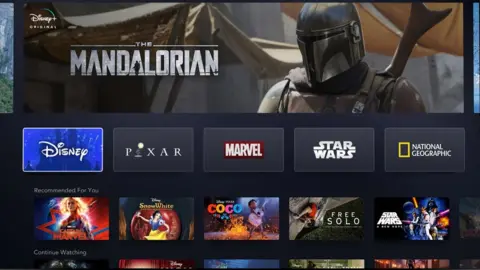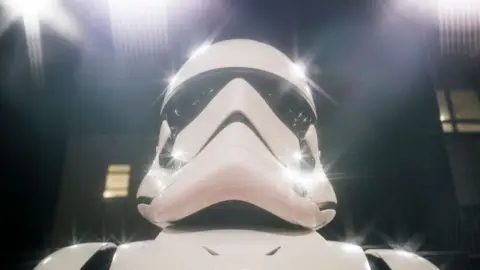It's Disney's turn to launch a streaming service
 Disney
DisneyCan an almost century-old company learn from its glorious past and create itself a brave new future? Coming to a small screen near you… eventually.
Disney has finally announced its long-anticipated streaming service, but it won’t be available until November in North America - and in some markets, it will take much longer.
That’s due to several factors, but mostly because Disney is still in the process of clawing back the rights to its content, sold to other streaming platforms before it had platform aspirations of its own.
It will take as long as four years before all of the deals have expired, the firm said. The delay could hobble Disney’s chances to succeed in the streaming market, described by chief executive Bob Iger as his “biggest priority”.
When it does eventually launch, however, Disney+ will be a streaming juggernaut. The service will bundle together some of the firm’s major franchises, including the work of Pixar, Marvel, National Geographic and Star Wars, for a monthly subscription price of $6.99, or $69.99 a year.
 Disney
DisneyAnd because the firm has had its chequebook out lately - spending $70bn on 20th Century Fox - Disney+ will also incorporate content from recently acquired companies, such as the first 30 seasons of The Simpsons.
More widely, Disney also owns sports network ESPN, which now has more than 2 million paid digital subscribers, and India’s Hotstar - which enjoys 300m subscribers in a market predicted to continue to grow extremely quickly. Disney is also a majority owner in Hulu, the US streaming service that has plans to expand globally soon, the firm said.
Straight to Disney+
These are all big moves that place Disney right at the heart of a crowded but increasingly lucrative streaming market - one where being distinct is vital. Netflix expects to spend $15bn on new content this year to achieve this aim. Apple, last month, launched its Apple TV+ service, with help of Oprah and friends who will be creating exclusive content.
Disney’s strategy to reassure its investors, it seems, is to state that obvious: its been doing this for a very long time indeed.
The launch of Disney+ took place in a fitting location that has seen plenty of transformation over the past few decades: Sound Stage 2, on the firm’s iconic, sprawling Los Angeles campus. Built in 1949, the studio was the space where the original Mary Poppins was filmed, as well as, decades later, Pirates of the Caribbean. Both heralded new technologies in filmmaking.
 Getty Images
Getty ImagesBut, Disney’s illustrious past could end up being a hindrance. It sold 900m movie tickets last year, bringing in more than $7bn in box office revenue. It can’t afford to lose the core of its business, and so it will keep its big name content off Disney+ until well after its traditional run-out in the cinema and home entertainment sales (as in, buying it on Blu-Ray, or downloading it).
Disney+ subscribers will instead get additional content, mini-series based on characters in the new films, or behind the scenes footage.
There will be straight-to-Disney+ films available when the service goes live, such as Christmas film Noelle, starring Anna Kendrick, and a remake of Lady and the Tramp. These films will be made with “all the care” of typical Disney movies, the company promised, but as with straight-to-video in years gone by, consumers will surely not see them as being in the same league.
Over-subscribed?
Higher hopes will be pinned on exclusive series made for Disney+, such as The Mandalorian, a the first live-action Star Wars TV series - which will be on the service from launch.
This is an expensive endeavour for Disney. It doesn’t expect Disney+ to turn a profit until 2023 at the earliest, and in the meantime it is losing out on revenue it was getting by selling on its content to other streaming providers - it was getting $150m from Netflix alone, according to reports.
The company already has a streaming service in the UK called Disney Life. It has not announced whether this service will close when Disney+ arrives.
At $6.99 a month, Disney is laying down a huge challenge to Apple, which hasn't yet told customers how much its service will cost when it too launches later this year.
Above all, though, the unanswered question remains: just how many subscription services can the public take? A generation of delighted “cord cutters”, who cancelled traditional TV subscriptions in favour of streaming, might soon start to wonder how much it might cost just to, you know, plug the cord back in.
